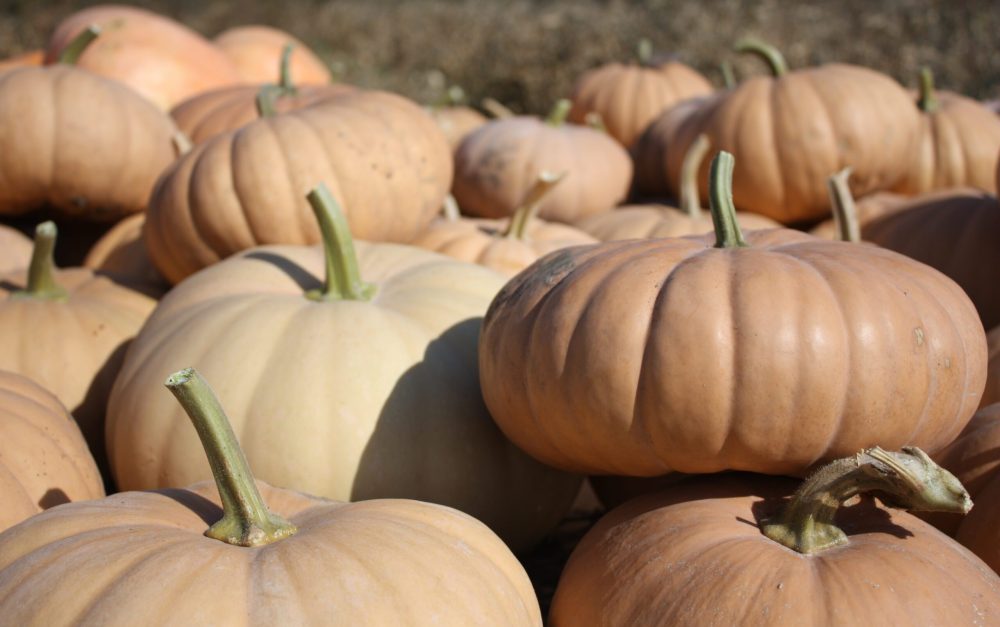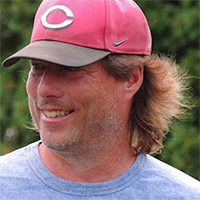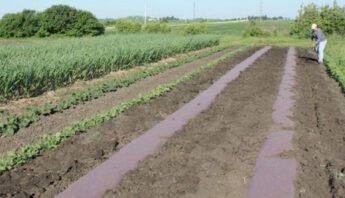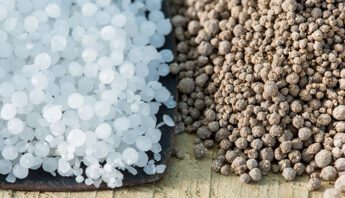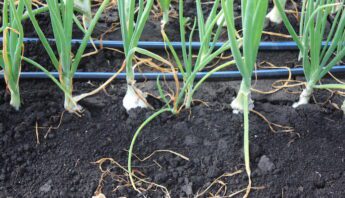One of the stories that is frequently told to, and sometimes by, farmers is that growing food or crops is all about yield and the bottom line. It doesn’t matter whether you are a grazier, a row crop farmer, an orchardist, or you work a small-scale, diversified farm; the temptation is to measure the success of your efforts based solely on these two measurements:
Did the farm produce as much as it could have?
Did the farm bring in as much income as it can?
Unfortunately, when a person views farming that way, they fail to consider so many other measurements of success that are just as important. This limited set of measures also fail to recognize that there is a difference between “enough” and “as much as is possible.”
I like to broaden my farm’s balance sheet to include measurements that go beyond total yield and profit. In my opinion, there is much more to being a successful farmer and land steward than money and yield.
Considering investment in natural assets
When a farmer considers only how much they can produce and to turn it into the most money they can get, they close their mind to investments that can bring stability to future production and success. This short-term thinking makes it easy to pretend that pesticides, synthetic fertilizers, mono-cropping (one crop in a field) and tilling up every square inch of land are not only good ideas, but the best ideas. Suddenly, confining as many animals into a shelter as possible because there is a better return per square foot of space suddenly seems reasonable and even preferable.
Instead, land stewards recognize that the health of the soil we grow our crops in needs to be maintained with an eye towards future success, not just this year’s numbers. A cover crop will represent an expense on the regular balance sheet, but it can be an asset for soil health. A perennial crop in the rotation may represent a loss in potential income for a season or two, but it also provides value when we consider the health of the land being farmed.
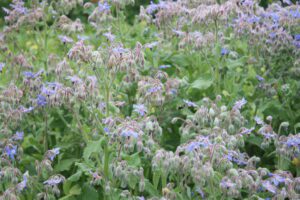
Bumblebees in borage
On our farm, we have considered the health of our pollinators to be another line on our balance sheet that needs attention. Many of our crops are pollinator-dependent. If we want them to produce, we need these natural workers to be present. So, we invest in them by intercropping plants that attract these organisms and we maintain wild spaces so they have a refuge and a home nearby from season to season, year to year.
Considering a broader farm balance sheet
We also find ourselves thinking about a balance sheet that goes beyond our farm. Rather than focusing only on this season’s production and income, we consider how what we do impacts our neighbors, our communities, and our environment.
There are many farms, like ours, that produce a wide range of foods and strive to sell those foods locally or regionally. It should not be a surprise that a direct relationship with the market encourages investment into the communities where that market resides. Sometimes that investment comes in the form of money, such as when our farm buys feed from another local farm for our laying hens, or when we pay an accountant in town to help us with our taxes. But, it is just as likely that growers, like ourselves, will be found at local events supporting schools or donating food to a community dinner.
It should be no surprise that the connection to the community lands on both sides of the balance sheet. Certainly, there are some costs that come with running a local business of any sort. But, they are outweighed when you consider the support the community can give the farm when things aren’t going well. And when it comes to product pricing, a farmer has an opportunity to be a price-maker, covering their expenses, rather than a price-taker, being forced to accept a loss because a broader market forces it to happen.
Thinking beyond yield and money
We need to challenge ourselves to think even more broadly. For example, many vegetable farms use plastic mulch to help control weeds in their crops. We understand fully why this option is a popular choice. The cost per foot is relatively low and weeds are often one of the toughest things to deal with in a growing system.
Unfortunately, plastic mulch can only be used once. After that, it just becomes more single-use plastic in the landfill. In this case, it is important to consider the larger balance sheet that includes a broader segment of society than the effect on our farm and its immediate surroundings. After thinking hard about this, our farm moved to using mulches made from organic materials, such as paper, straw and grass.
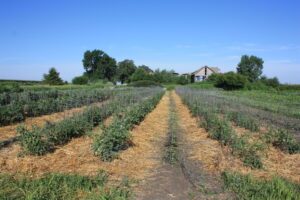
Straw mulch in intercropped field
This decision was reached out of concern for (for lack of a better phrase) the greater good. But, it turns out there were some very good reasons to do it for our farm’s good. First, these natural products break down and produce organic matter for our soil, while still suppressing weeds effectively. And, it turns out that the use of black plastic over a longer period of time actually can result in a build-up of plastic debris in the soil. By avoiding their use altogether, we prevent this from becoming a future problem on this land we steward.
A broader focus leads to better farming
I fully recognize that all of this might sound idealistic and impractical. But, I would like to suggest that our current focus on the two outcomes, yield and profit, are far less practical. Each time we have challenged ourselves to think more broadly about how our farm performs we’ve been able to identify options that ended up providing more benefits to more people and the environment. Often (but not always) these choices included better long-term yield or profitability for our farm along the way.
So, why don’t more farmers think this way? The system we have in place for food and farming is a big part of the problem. It’s in the interest of chemical companies and Big-Ag to encourage a focus on profit, yield and short-term risk/gain, because it drives up their profit. For example, crop insurance measures risk on the basis of a single season, so options that might be good for the medium or long term success of the farm aren’t encouraged. In effect, farmers can find themselves feeling trapped with few alternatives to pesticides and large, industrial farms.
The good news is this: There are farms, like ours, that still manage to be successful when they look at a broad-view balance sheet, despite the systems that are in place. Imagine what we could do if we changed our policies, stopped catering to industry, and supported successful farming beyond yield and profit.



